Timeline of Fabric History
Timeline of Fabric History
IMPORTANT DATES IN FABRIC HISTORY
9000 BC TO 3000 BC The domestication of sheep, goats and dogs dates from 9000 BC in the uplands of Zam Chem Shanidar from 7000 BC at Jarmo in the Zagros Mountains of north west Iran, and Israel and south Turkey from the 7000 to 6,000 BC. Sheep rearing became major industry in Sumeria between 3,500 to 3,000 BC, by which time both hairy and wooly sheep were known.
8000 BC A burial couch found at Gordion in ancient Phrygia and dated to 8,000 BC was covered by some twenty layers of linen and wool cloth, together with traces of Tyrian purple cloth and fragments of hemp and mohair.
7160-6150 BC Israeli excavations reveal that the deserts of Israel provide ideal conditions for the preservation of fibers. Finds from the Neolithic Hemal Cave in the Judean desert dating from 7160 to 6150 BC including rope, netting matting, spun and plied thread, chiefly flax, and tabby woven cloth, including a blue-dyed textile with shell and bead decoration.
7000 BC 7000 Flax was known in Syria and Turkey, and is apparently the earliest plant source for fiber (linen) as well as an important source of oil (pressed from the seed). By 5000 BC we know that various flax species were involved. Evidence shows that seed size increased over time, suggesting that humans were selecting for larger seed.
6000 BC TO 3000 BC Sheep were also kept at Bougras in Syria from 6,000 BC and in Jordan and Israel from 3,000 BC often simultaneously with flax cultivation in mixed farming economies, and by pastoral nomads, including the Old Testament Jewish tribes, whose sheep provided wool for tents from time immemorial.
6000 BC The title of "earliest textile" has recently shifted from Egypt to Anatolia (modern day Turkey), with Egypt and Israel close contenders. James Mallet's dig at the Neolithic village of Catal Huyuk in southern Turkey dating from 6,000 BC, exposed fine-spun and plied-thread, plain weave tabby cloths and garments, some of the tabby designs showing signs of being darned.
6000 BC TO 5000 BC Flax was the commonest ancient plant fiber. Hemp, rush, palm and papyrus were also used. Papyrus requires a good water supply and settled communities for its cultivation. Seeds of domesticated flax found with spindle whorls together on the same site are indicative of textile activity. These have been found in Syria in Ramad (6000 BC)., Samarran villages in northern Iraq (at Tel-es-Sawan and Choga Mami) .
5500 BC Excavations in the Tizra Valley in Hungary have found remains of several huts that date approximately 5500 BC, some of the huts were equipped with sets of clay loom weights along with the household gear. One excavation found the outlines of a vertical loom that was approximately 4 to 5 feet in width.
5000 BC During the "stone age" somewhere some stone age person needed to make something to either catch something, carry something or hold something. Thus they created the very first piece of thread (twine actually). Later during the stone age period (Neolithic) these same people would develop the crafting of sinew to sew hides together to make clothing in the northern regions of Europe.
5000 BC Mongolia and the Central Asian Steppes have uncovered important textile finds that date back to the 5th Century BC.
4500 BC Weaving loom invented.
4000 BC 4000 Cotton seed dating from this time period have been found in Pakistan.
3300 BC The ICEMAN also spelled ICE MAN, also called ÖTZI, the oldest mummified human body ever found intact. It was found by a German tourist, Helmut Simon, on the Similaun Glacier in the Tirolean Ötztal Alps, on the Italian-Austrian border, on Sept. 19, 1991. Radiocarbon-dated to 3300 BC, the body is that of a man aged 25 to 35 who had been about 1.6 m (5 feet 2 inches) tall and had weighed about 50 kg (110 pounds). He apparently fell victim to exposure or exhaustion while crossing the Alps and died of freezing. The small rocky hollow in which he lay down to die was soon covered (and protected) by glacial ice that happened to be melting 5,300 years later when his body was discovered by modern humans. His nickname, Ötzi, stems from the Ötztal Alps, where he was found.
The Iceman's body showed no signs of disease, though he had a broken nose and several recently fractured ribs. His few remaining scalp hairs provide the earliest archaeological evidence of haircutting, and short blue lines on his skin (lower spine, left leg, and right ankle) have been variously interpreted as the earliest known tattoos or as scars remaining from a Neolithic therapeutic procedure. The various clothes and accouterments found with him are truly remarkable, since they formed the gear of a Neolithic traveler. The Iceman's basic piece of clothing was an unlined fur robe stitched together from pieces of ibex, chamois, and deer skin. A woven grass cape and a furry cap provided additional protection from the cold, and he wore shoes made of leather and stuffed with grass. The Iceman was equipped with a small copper-bladed ax and a flint dagger, both with wooden handles; 14 arrows made of viburnum and dogwood, two of which had flint points and feathers; a fur arrow quiver and a bow made of yew; a grass net that may have served as a sack; a leather pouch; and a U-shaped wooden frame that apparently served as a backpack to carry this gear. His scant food supply consisted of a sloeberry, mushrooms, and a few gnawed ibex bones.
3600 BC The origin of silk production and weaving is ancient and clouded in legend. The industry undoubtedly began in China, where, according to native record, it existed from sometime before the middle of the 3rd millennium BC. For many centuries the Chinese zealously guarded the source and methods of production of silk, but by the 1st millennium BC they had begun trading silk cloth abroad.
2600 BC One of the earliest records that fabric was being dyed in Asia (China).
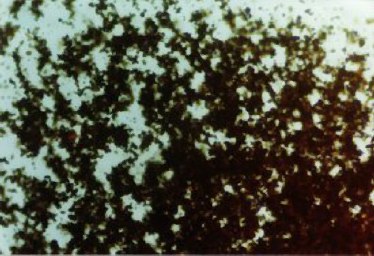
2200 BC (Unknown for certain) Kermes (either the scale insect Kermes ilicis) or the bright-red dye obtained from the dried bodies of these insects. The oldest known red dyestuff, resembling but inferior to cochineal, it was used by the early Egyptians.
A SMALL PILE OF KERMES ILLICIS
2026 BC A tablet of 2,026 BC records a loan of Ur's Temple of Nanna to a merchant of "sixty talents of wool, seventy garments and 180 skeins for buying copper from Makan." Ur also traded up river to Babylon and Mari in north Syria.
1800 BC Ur's principal export became wool and the Law of Hammurabi (1,800 BC) lists wool as an export from Babylon.
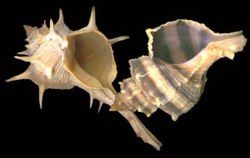
1600 BC Variously known as Royal purple, Tyrian purple, purple of the ancients, this ancient dyestuff, mentioned in texts dating about 1600 BC, was produced from the mucus of the hypobranchial gland of various species of marine mollusks, notably Murex .
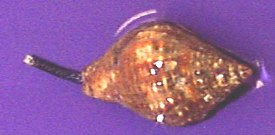 Although originating in Tyre (hence the name), man's first large scale chemical industry spread throughout the world. With the decline of the Roman Empire, the use of the dye also declined and large scale production ceased with the fall of Constantinople in 1453 (29 May, actually). It was replaced by other cheaper dyes like lichen purple and madder.
Although originating in Tyre (hence the name), man's first large scale chemical industry spread throughout the world. With the decline of the Roman Empire, the use of the dye also declined and large scale production ceased with the fall of Constantinople in 1453 (29 May, actually). It was replaced by other cheaper dyes like lichen purple and madder. Thais haemastoma a European equivalent of the Murex. Top view
1500 BC 1500 BC The vertical loom was introduced, with one twist..it operated by males! In Egypt, the vertical loom replaced the horizontal loom that had been around for almost 3,000 years.
1370 BC 1370 Chemical tests of red fabrics from Tell el `Amara, Egypt show the presence of alizarin, a pigment extracted from madder (Rubia tinctorum.)
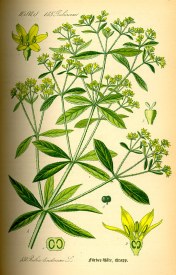 715 BC Rome establishes wool dyeing craft.
715 BC Rome establishes wool dyeing craft.694 BC Trees bearing wool (cotton) were introduced to Assyria by Sennacherib.
490 BC Quilting was known to the ancient Persians and, at the time of the Battle of Marathon (490 BC), quilted garments were worn as armor.
400 BC Aperlae in present-day Turkey indicate it was probably established in the 4th century BC to harvest marine snails, the source of a coveted dye known as "Tyrean purple" used by Roman emperors and others of the region's elite. Although no written history of Aperlae exists, the archaeological evidence indicates it was once home to about 2,000 people, despite its lack of fresh water and abysmal coastline location for maritime activity, he said.
The evidence for the city's surprising origins includes a large mound of murex snail shells piled on its outskirts and three large, rectangular tanks now submerged in the harbor area, he said. The brick tanks, the largest of which measures 27 feet by 18 feet by 6 feet, were probably used to manufacture and store the dye, which may have been shipped by small vessels to larger harbors in the region.
"The real mystery seemed to be why the city was ever established there in the first place," he said. "I'm convinced these tanks hold the key to the city's existence. "It looks like the city was developed to take advantage of this natural resource."
The research project was undertaken by Hohlfelder, University of Maryland Architecture Professor Lindley Vann and several students, including CU-Boulder undergraduates Davis Alvey and Christopher Bowles. The little known site was brought to Hohlfelder's attention by American Bob Carter, 83, who briefly explored it in the 1970s and accompanied the team to the Aperlae in June 1996.
Located on the southern coast of Turkey 15 miles east of the port city of Kas, Aperlae is being surveyed in cooperation with the Turkish Ministry of Culture.
331 BC The Greek General Alexander the Great discovers 190 year old purple robes when he conquers Susa (the capital of Persia).
327 BC India develops the art of cotton dyeing. Alexander (the Great) finds "beautiful printed cottons".
236 BC Fabric dyers in Egypt are described as "smelling of fish, with tired eyes and hands working unceasingly". This according to an Egyptian papyrus.

The evidence for the city's surprising origins includes a large mound of murex snail shells piled on its outskirts and three large, rectangular tanks now submerged in the harbor area, he said. The brick tanks, the largest of which measures 27 feet by 18 feet by 6 feet, were probably used to manufacture and store the dye, which may have been shipped by small vessels to larger harbors in the region.
"The real mystery seemed to be why the city was ever established there in the first place," he said. "I'm convinced these tanks hold the key to the city's existence. "It looks like the city was developed to take advantage of this natural resource."
The research project was undertaken by Hohlfelder, University of Maryland Architecture Professor Lindley Vann and several students, including CU-Boulder undergraduates Davis Alvey and Christopher Bowles. The little known site was brought to Hohlfelder's attention by American Bob Carter, 83, who briefly explored it in the 1970s and accompanied the team to the Aperlae in June 1996.
Located on the southern coast of Turkey 15 miles east of the port city of Kas, Aperlae is being surveyed in cooperation with the Turkish Ministry of Culture.
331 BC The Greek General Alexander the Great discovers 190 year old purple robes when he conquers Susa (the capital of Persia).
327 BC India develops the art of cotton dyeing. Alexander (the Great) finds "beautiful printed cottons".
236 BC Fabric dyers in Egypt are described as "smelling of fish, with tired eyes and hands working unceasingly". This according to an Egyptian papyrus.

130 BC-273 AD Textiles found in Israel obey the Jewish Law (Shaatnez), prohibiting the mixing of animal and vegetable fibers, but otherwise are similar to textiles elsewhere. In the Cave of Letters, 132 BC-AD 35, indigo-and purple -dyed yarns, white wool tent yarn, plain and striped tabbies, garments and linen scroll-wrappers were found. At the Masada, destroyed by the Romans in AD 273, the baskets and mats of the Zealots who died there were preserved with household cloths, tapestry, clothing and sandals.
55 BC Romans soldiers discover in modern day Scotland people painted with Woad dye ("the Picts" used the same color content as indigo).
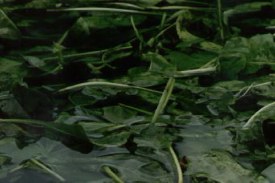
Madder and Indigo dyes have been found in several Roman graves thus replacing Purpura (old Imperial Purple). Purpura was a mollusk of which only several small glands were used in the making of the Purpura. Some people believe that the name purple comes from the name of the mollusk. The actual color of the Purpura was more of a crimson than purple. At Taranto in southern Italy there stands a hill that is composed totally of the shells of the Purpura mollusk. Over use eventually drives the mollusk to near extinction levels even to this day.
3rd Century AD The Stockholm Papyrus is found in a grave, written in Greek has a recipe for imitation purple.
273 AD The wife of Emperor Aurelian orders a Purpura dyed silk garment...the Emperor orders the sale canceled. The silk was imported from China (the China "silk road" trade route was established just before this date. The cost of the silk garment for Aurelian's wife would have cost its weight in gold. That is how much the various traders charged for silk per order.
218 AD Elagabalus (AD 218-222) was the first Roman emperor to wear silk. Later, looms were set up to weave silk, but China retained control of sericulture, exporting only silk thread or fabric, both of which were prohibitively expensive.
3rd Century A decree was issued by Emperor Theodosium of Byzantium forbidding the wearing of Royal Purple (Purpura) except for the Royal Family, on pain of death. It is believed that this action was taken to protect the mollusk Purpura from extinction.
400 AD Purpura becomes almost extinct. Most species of Murex exude a yellow fluid that, when exposed to sunlight, becomes a purple dye. The dye murex (Murex brandaris) of the Mediterranean was once a source of royal Tyrian purple.
700 AD (roughly) Batik is developed in Southeast Asia as a wax resist technique. This according to a Chinese manuscript.
827 In Sicily, after the Arab conquest beautiful fabrics were produced in the palace workshops at Palermo.
925 Germany initiates the Wool Dyers Guild.
1130 Skilled weavers who came to Palermo from Greece and Turkey produced elaborate fabrics of silk interlaced with gold.
1188 London: Guilds for Dyers is established.
1197 Parliament issues rules for regulation of wool dyeing to protect the public from poor quality goods, after King John makes the request.
1200 The ancient art of making dye from lichens is discovered in Asia Minor. ALIZARINE (also spelled alizarin), a red dye originally obtained from the root of the common madder plant, Rubia tinctorum,
in which it occurs combined with the sugars xylose and glucose. The cultivation of madder and the use of its ground root for dyeing by the complicated Turkey red process were known in ancient India, Persia, and Egypt; the use spread to Asia Minor about the 10th century and was introduced into Europe in the 13th.
1266 Following the conquest of Sicily by the French, the weavers fled to Italy; many settled in Lucca, which soon became well-known for silk fabrics with patterns employing imaginative floral forms.
1290 The dyes to the textile world consist of woad, madder (from the madder plant, and weld (also spelled "wold"; dyer's-weed (resda lutela), which yields a beautiful yellow dye. (Anglo-Saxon, geld or gold, our yellow, etc.).
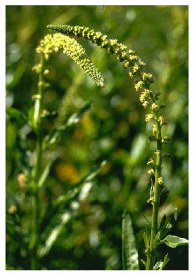
12th to 13th centuries A directory of over 200 tailors, dyers and fullers, weavers and spinners was published in Florence, Italy. The textile trade was such a growth industry that the profits soon gave rise to the banking industry in Florence.
3th Century In Germany, Woad was raised commercially. Woad also called DYERSWOAD (resda tinctoria), biennial or perennial herb, of the mustard family (Brassicaceae), formerly grown as a source of the blue dye indigo and now sometimes cultivated for its clusters of small, four-petalled yellow flowers. It is a summer-flowering native of Eurasia, now naturalized in southeastern North America. Woad reaches 90 centimeters (3 feet) and produces clusters of dangling, winged, oval, single-seeded fruits. The hairy stem leaves have arrow-shaped bases; the long basal leaves are downy and lance shaped. The ground and dried leaves, when wetted and fermented, produce indigo.
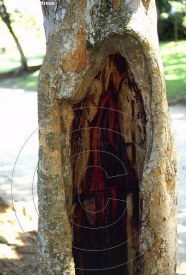 1315 Florentines captured Lucca, taking the Sicilian weavers to Florence, a center for fine woven woolens from about 1100 AD, and also believed to be producing velvet at this time.
1315 Florentines captured Lucca, taking the Sicilian weavers to Florence, a center for fine woven woolens from about 1100 AD, and also believed to be producing velvet at this time.1321 The East Indies and India export Brazilwood. Later Brazilwood becomes a source of dye for textiles. Brazilwood is a dense, compact dye wood from any of various tropical trees whose extracts yield bright crimson and deep purple colors.
In ancient and medieval times, the brazilwood imported to Europe from the Middle East was Caesalpinia braziliensis ) and other species of Caesalpinia. Caesalpinia echinata (called pau-brasil in Portuguese) is indigenous to the Brazilian coast and played a role in the naming of that country.
1327 to 1377 Need to improve the wool and textile industry in England, and to keep it ahead of other nearby nations foreigners are offered protection by the "Royal Wool Merchant" King Edward III.
Close of 15th century in Florence a high degree of artistic and technical skill was developed, with 16,000 workers employed in the silk industry and 30,000 in the wool industry. By the middle of the 16th century a prosperous industry in velvets and brocades was also established in Genoa and Venice.
15th century Cennino Cennini late Gothic Florentine painter who perpetuated the traditions of Giotto, which he received from his teacher Agnolo Gaddi. He is best known for writing Il libro dell'arte (1437; The Craftsman's Handbook), the most informative source on the methods, techniques, and attitudes of medieval artists. Also writes about the printing of cloth using block printing technique developed in Asia Minor, also writes a treatise titled "Method of Painting Cloths by Means of Molds".
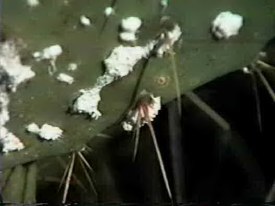
15th Century Montezuma conquers to Mayans. It is estimated that 11 Mayan cities paid a yearly tribute of 2000 decorated cotton blankets and 40 bags of Cochineal dye each. Red dyestuff consisting of the dried, pulverized bodies of certain female scale insects, Dactylopius coccus, of the Coccidae family, cactus-eating insects native to tropical and subtropical America. Cochineal is used to produce scarlet, crimson, orange, and other tints and to prepare pigments such as lake and carmine. The dye was introduced into Europe from Mexico, where it had been used long before the coming of the Spaniards. The insects are carefully brushed from the cacti into bags and are then killed by immersion in hot water or by exposure to sunlight, steam, or the heat of an oven; much of the variety in the appearance of commercial cochineal is caused by the differing modes of treatment. It takes 70,000 insects to make one pound of cochineal.
1429 The Margiegola Dell'Arte de Tentori was published in Italy; this is also the first European book on the subject of dyes.
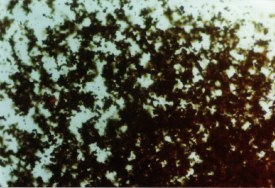 1464 "Cardinals Purple" was introduced by Pope Paul II which is the dye extracted from the Kermes insect. Became so popular as a "luxury dye" for the Middle Ages.
1464 "Cardinals Purple" was introduced by Pope Paul II which is the dye extracted from the Kermes insect. Became so popular as a "luxury dye" for the Middle Ages.During the Middle Ages the dye becomes so valuable that landlords use Kermes dye as a unit of exchange.
1472 The Dyers Company of London is Chartered by Edward IV. The charter allows for the complete monopoly of the dye industry for many years.
1507 The cultivation of dye plants as an industry begins in France and Holland. Germany has been doing so since 1290.
1519 Cotton is discovered in Central and South America by Pizarro and Cortez. The local indigenous population were already using the block printing method to produce brightly colored fabric. Pizarro and Cortez send back to Spain an unknown quantity of fabric.
1519 Cotton is discovered in Central and South America by Pizarro and Cortez. The local indigenous population were already using the block printing method to produce brightly colored fabric. Pizarro and Cortez send back to Spain an unknown quantity of fabric.
They also bring Cochineal dye with them. The Cochinel dye has also been found previously on the Island of La Orotava in the Canary Islands. To prepare carmine, the powdered insect bodies are boiled in ammonia or sodium carbonate solution, the insoluble matter is removed by filtering, and alum is added to the clear salt solution of carminic acid to precipitate the red aluminum salt. Purity of color is ensured by the absence of iron. Stannous chloride, citric acid, borax, or gelatin may be added to regulate the formation of the precipitate. For purple shades, lime is added to the alum.
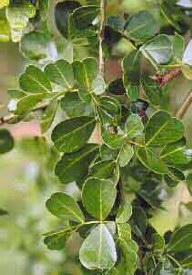
1600's Dye shops are organized in Europe by men who train male apprentices. In homes women pass home dyeing down through their daughters.
1614 "Logwood" is developed from (species Haematoxylon campechianum), tree of the pea family (Fabaceae), native to Central America and the West Indies. The name is sometimes applied also to Condalia obovata, a tree of the buckthorn family (Rhamnaceae) native to southwestern North America. H. campechianum grows 9-15 m (30-50 feet) tall and has a short, crooked trunk. The leaves are pinnately compound (feather-formed), with rather oval leaflets. The small yellow flowers grow in a cluster from the leaf axil (upper angle between branch and leaf stem). The wood is heavy and extremely hard. A black dye, also called logwood, is obtained from the heartwood. Fustic either of two natural dyes. Old fustic, or yellowwood, is derived from the heartwood of dyer's mulberry, a large, tropical American tree (Chlorophora tinctoria, or Maclura tinctoria) of the mulberry family, Moraceae. The dye produces yellows on wool mordanted (fixed) with chromium salts.
The dye termed young fustic (zante fustic, or Venetian sumac) is derived from the wood of the smoke tree
(Cotinus coggygria, or Rhus), a southern European and Asian shrub of the cashew family, Anacardiaceae.
Both old and new fustic have been displaced from commercial importance by synthetic dyes. The process of dyeing fabric using wood is termed "dyeing cloth in the wood".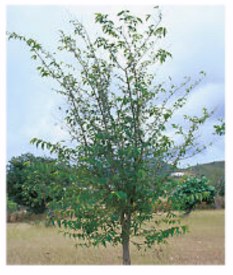

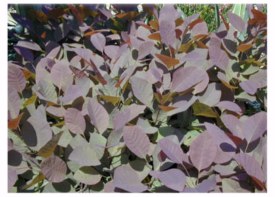 1630 A Dutch chemist Drebbel discovered the use of tin compounds as mordants for cochineal, a scarlet dye. Was used extensively at the Gobelin factory in Paris and the Gobelin family becomes famous as dyers and fabric manufacturers. The dye was also used extensively at the Bow Dye works in England.
1630 A Dutch chemist Drebbel discovered the use of tin compounds as mordants for cochineal, a scarlet dye. Was used extensively at the Gobelin factory in Paris and the Gobelin family becomes famous as dyers and fabric manufacturers. The dye was also used extensively at the Bow Dye works in England.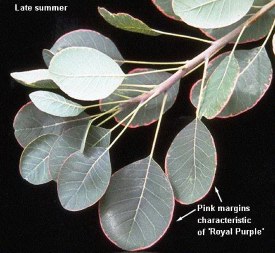
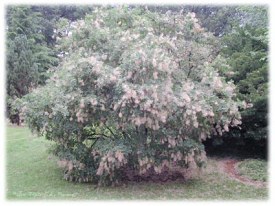
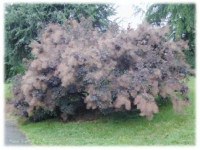
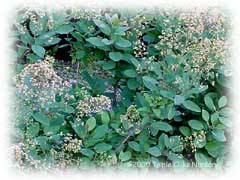 1630 Native Americans in Salem, MA teach natural dyeing techniques to European settlers.
1630 Native Americans in Salem, MA teach natural dyeing techniques to European settlers.1631-1633 (roughly) Calico is imported from Calicut, India by the East India Company. Initially they believe that the fabric is linen. Later they learn that it is cotton.
1640's to 1660's (roughly) England establishes a colony at Mosquito Coast of Honduras (British Honduras) British buccaneers and logwood cutters finally settled on the inhospitable coast in the mid-17th century. The logwood cutters suffered from such ailments as malaria, thyphoid, typhus, etc but they were paid handsomely enough that within a few years a logwood cutter could easily make themselves wealthy.
1685 William Cole in 1685 described in some detail how to use Nucella lapillus (his drawing ) to obtain the purple dye:
He "found this species on the shores of the Bristol Channel, which on cracking and picking off the shell, exhibited a white vein lying transversely in a little furrow or cleft next the head of the fish; which must be dug out with the stiff point of a horse hair pencil being made short and tapering; which must be so formed by reason of the viscous clamminess of that white liquor in the vein so that by its stiffness it may drive in the matter into the fine linen or white silk ....... if placed in the Sun will change into the following colors, i.e., if in the winter about noon, if in the summer an hour or two after sunrise and so much before setting (for in the heat of the day the colors will come on so fast, that the succession of each color will scarce be distinguishable) next to the first light green will appear a deep green; and in a few minutes this will change into a dull sea green; after which, in a few minutes more, it will alter into a watchet blue; from that in a little time more it will be purplish red; after which, lying an hour or two (supposing the Sun still shining) it will be of a very deep purple red; beyond which the Sun can do no more."
1688 Scottish dyers become so profitable that they pose a threat to English dyers. James II prohibits undyed cloth from England to other countries.
1689 Calico print works established commercially in Augsburg, Germany...later this grows into a large industry in Germany.
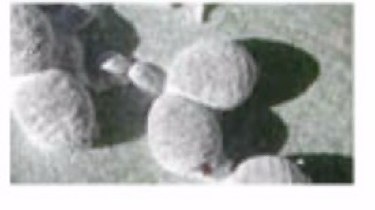 18th Century until 1950 the uniforms of the Buckingham Palace Guards are dyed using cochineal. Continues until 1950. The process uses tin-mordanted wool with cochineal.
18th Century until 1950 the uniforms of the Buckingham Palace Guards are dyed using cochineal. Continues until 1950. The process uses tin-mordanted wool with cochineal.1700's (roughly) Indigenous plants are used as dye by Navajo weavers for their depth of rich colors.
1708-1716 A series of laws prohibiting the importation of printed silk textiles thus making calico's and silk textiles more popular than ever is signed into law by William III.
1733 John Kay invests the Flying Shuttle. Kay was a weaver of broadloom fabrics, which because of their width required two weavers to sit side by side, one throwing the shuttle from the right to the center, the other reaching between the warps and sending it on its way to the left and then returning it to the center. The stopping of the shuttle and the reaching between the warps caused imperfections in the cloth. Kay devised a mechanical attachment controlled by a cord jerked by the weaver that sent the shuttle flying through the shed. Jerking the cord in the opposite direction sent the shuttle on its return trip. Using the flying shuttle, one weaver could weave fabrics of any width more quickly than two could before. A more important virtue of Kay's invention, however, lay in its adaptability to automatic weaving.
1745 The commercial growing of Indigo starts in England. Later the price of the dye falls to where it is cheaper to produce the dye in England than to import it from the East Indies.
1757 Copper plate printing of fabric invented ion England. Later improvements eventually allow the invention of roller printing of textiles.
1766 Cudbear is patented by Dr. Cuthbert Gordon becomes a dye. Initially prepared from a variety of lichens.
1770 The spinning wheel continued in use into the 19th century, receiving an important improvement in the 16th century in the form of the Saxony wheel, which made possible continuous spinning of coarse wool and cotton yarn. With this improvement in speed, three to five spinning wheels could supply one loom with yarn, but Kay's flying shuttle greatly increased the output of the loom and created a demand for spinning machinery. James Hargreaves' spinning jenny (patented 1770) operated a number of spindles simultaneously, but was suitable only for making yarn used as filling. Sir Richard Arkwright, making use of earlier inventions, produced a better machine, capable of making stronger yarn than Hargreaves' jenny.
1774 The discovery by Carl Willhelm Scheele that chlorine destroys vegetable colors rapidly speeds up the bleaching process. Previously the bleaching process consisted of spreading large tracts of land with cotton fabric and allowing the sun to bleach it. Problems with this is that it took large amounts of land to spread the fabric on and secondly the process sometimes took years if not months!
1774 Prussian Blue dye is developed commercially. Prussian blue was first synthesized about 1704 by the reaction of iron(II) salts with potassium ferrocyanide; the initial product, an insoluble white compound called Berlin white, was then oxidized to the blue pigment. Modern commercial methods are similar but use the cheaper sodium ferrocyanide; the oxidation is carried out with sodium chlorate, sodium chromate, or other reagents.
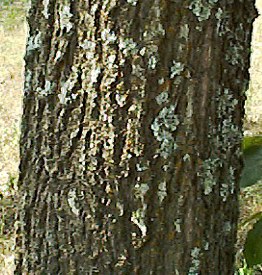 1775 Quercitron bark developed as a fabric dye. Inner bark of the black oak, Quercus velutina, which contains a coloring matter used to dye wool bright yellow or orange. At one time this colorant was used with cochineal to produce scarlets of particular brilliance.
1775 Quercitron bark developed as a fabric dye. Inner bark of the black oak, Quercus velutina, which contains a coloring matter used to dye wool bright yellow or orange. At one time this colorant was used with cochineal to produce scarlets of particular brilliance. To obtain the coloring matter, the exterior bark is shaved from the tree, which is native to the middle and southern United States, to expose the inner bark, which is then detached, ground, and subjected to hot water under pressure. The extract deposits a crude quercetin known commercially as yellow flavine. A second variety, known as red flavine, is deposited when an extract of the bark is digested at the boil with dilute acid.
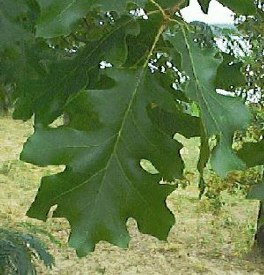
These products are used to dye wool mordanted (fixed) with aluminum or tin compounds to bright shades of yellow and orange.
1779 Samuel Crompton's "mule" vastly increased productivity, making it possible for a single operator to work more than 1,000 spindles simultaneously; and it was capable of spinning fine as well as coarse yarn. Several further modifications were introduced in Britain and the United States, but the Crompton mule effectively put yarn spinning on a mass production basis.
1783 Roller printing developed.
1785 The process of roller printing is developed. Speeds the printing process from hand printing to industrialization.
1786 Commercial bleaching operation are setup at Bertholet, France. Bleaching, a process of whitening fabric by removal of natural color, such as the tan of linen, is usually carried out by means of chemicals selected according to the chemical composition of the fiber. Chemical bleaching is usually accomplished by oxidation, destroying color by the application of oxygen, or by reduction, removing color by hydrogenation. Cotton and other cellulose fibers are usually treated with heated alkaline hydrogen peroxide; wool and other animal fibbers are subjected to such acidic reducing agents as gaseous sulfur dioxide or to such mildly alkaline oxidizing agents as hydrogen peroxide. Other oxidizing agents are hydrogen peroxide, sodium peroxide, sodium perobate.
1790 Acid discharge of mordant printing also called EXTRACT PRINTING, method of applying a design to dyed fabric by printing a color-destroying agent, such as chlorine or hydrosulfite, to bleach out a white or light pattern on the darker colored ground. In color-discharge printing, a dye impervious to the bleaching agent is combined with it, producing a colored design instead of white on the dyed ground.
1796 Bleaching powder, a solid combination of chlorine and slaked lime, introduced in 1799 by the Scottish chemist Charles Tennant, was thereafter produced in large quantity to bleach cloth and paper. It had the same effect as chlorine and could be more easily handled and shipped, but it was unstable and contained a large proportion of inert material. It remained the standard bleaching agent until the 1920s, but then it was gradually replaced by liquefied chlorine and solutions of sodium hypochlorite.
1798 Toiles de Jouy (French: "Fabric of Jouy"), also called JOUY PRINT, cotton or linen printed with designs of landscapes and figures for which the 18th-century factory of Jouy-en-Josas, near Versailles, Fr., was famous. The Jouy factory was started in 1760 by a Franco-German, Christophe-Philippe Oberkampf. His designs were printed originally from woodblocks alone but from 1770 from copperplates as well, this innovation having been anticipated in England in 1757.
1798 Asa Ellis publishes "The Country Dyers Assistant". Thus sharing recipes (receipts) for Colonial women to dye their own fabric at home.
1802 a form of resist wax technique a form of batik (on a large scale) was purchased by Sir Robert Peel from a traveler for approximately $25.00.
1823 Mercer develops chromate discharge of indigo.
1825 The first American production of calico printing by roller printing technique began in Philadelphia was begun by Mathias Baldwin. The factory could produce up to 300 yards of fabric per day.
1844 Mercerization in textiles, a chemical treatment applied to cotton fibbers or fabrics to permanently impart a greater affinity for dyes and various chemical finishes. Mercerizing also gives cotton cloth increased tensile strength, greater absorptive properties, and, usually, a high degree of luster, depending on the method used.
The treatment consists of immersing the yarn or fiber in a solution of sodium hydroxide (caustic soda) for short periods of time, usually less than four minutes. The material is then treated with water or acid to neutralize the sodium hydroxide. If the material is held under tension during this stage, it is kept from shrinking appreciably; if no tension is applied, the material may shrink by as much as one-fourth. Higher-quality cotton goods are usually mercerized; cloths so treated take brighter, longer-lasting colors from less dye. The effect of caustic soda on cotton was discovered in
1844 by John Mercer, an English calico printer, who received a patent for it in 1850.
1849 Picric acid was first obtained in 1771 by Peter Woulfe, a British chemist, by treating indigo with nitric acid. It was used as a yellow dye, initially for silk, beginning in 1849.
1850 (approximately) In the early synthetic dye plants, the equipment was primitive, consisting of simple iron vessels and wooden vats. In the latter half of the 19th century new processes arising from the discovery of an increasing number of new dyes led to improvements in the design of reaction vessels, autoclaves, pumps for the transfer of liquids, compressors, and vacuum pumps. The development of vitreous coating techniques, the use of lead and copper, and improvements in the centrifuge, drying stove, grinding, and mixing equipment also proceeded at that time. The advent of stainless steel and the introduction of plastic and polymer materials and of the newer techniques, especially the rubber coating of mild steel, have resulted in the gradual disappearance of the wooden vat and have reduced the use of lead and copper as constructional materials.
1853 William Henry Perkin enters (while searching for a cure of malaria) the Royal College of Chemistry, London, where he studied under August Wilhelm von Hofmann. While Perkin was working as Hofmann's laboratory assistant, he undertook the synthesis of quinine. He obtained instead a bluish substance with excellent dyeing properties that later became known as aniline purple, Tyrian purple, or mauve. In 1856 he obtained a patent for manufacturing the dye, and the next year, with the aid of his father and his brother Thomas, he set up an aniline manufacturing plant near Harrow. After Graebe and Liebermann announced their synthesis of the red dye alizarin, Perkin developed a cheaper procedure, obtained a patent for his process, and held a monopoly on its manufacture for several years
1858 Nitrous acid (HONO) was one of the reagents tried in the early experiments with aniline, and in 1858 the German chemist Johann Peter Griess obtained a yellow compound with dye properties. Although used only briefly commercially, this dye sparked interest in the reaction that became the most important process in the synthetic dye industry. The reaction between nitrous acid and an aryl amine yields a highly reactive intermediate; the reaction of this intermediate with phenols and aryl amines is the key step in the synthesis of more than 50 percent of the commercial dyes produced today.
1858-1859 Verguin discovers magenta. Magenta becomes more popular than mauve.
1861 Lauth discovers methyl violet, a basic dye.
1862 Hoffmann, one of the great dye chemists of his time develops Hoffmann's Violet. Hoffmann also proves that Inadvertent addition of excess aniline in a magenta preparation resulted in the discovery of aniline blue. From the molecular formulas of these dyes, Hofmann showed that aniline blue was magenta with three more phenyl groups (-C6H5), but the chemical structures were still unknown.
1863 Laboratory methods of preparing alizarin from anthraquinone were discovered in 1868, and, upon commercial introduction of the synthetic dye in 1871, the natural product disappeared from the market for textile dyes, though natural rose madder is still occasionally used, as a lake, for artists' colors. The application of alizarin to cotton, wool, or silk requires prior impregnation of the fiber with a metal oxide, or mordant. The shade produced depends on the metal present: Aluminum yields a red; iron, a violet; and chromium, a brownish red.
1868 Carl Graebe and German organic chemist who, assisted by Carl Liebermann, synthesized the orange-red dye alizarin, which quickly supplanted the natural dye madder in the textile industry.
1872 Lauth and Baubigny develop methyl green still in use today.
1873 The first sulfur dye a brown by Groissant and Bretonnaire in France.
1875 to 1876 Otto Witt proposed that dyes consist of conjugated systems, called chromophores, and salt-forming groups, or auxochromes, polar substituents that modify their colors. These ideas remain valid, although they have been broadened by better recognition of the role of specific structural features. Witt suggested the term chromogen for specific chromophore-auxochrome combinations. He also claimed that auxochromes impart dyeing properties to these compounds, but it later became clear that color and dyeing properties are not directly related.
1876 Malachite Green is used as a direct dye for silk, wool, jute, and leather and to dye cotton that has been mordanted with tannin. Prepared from benzaldehyde and dimethylaniline, the dye occurs as lustrous green crystals soluble in water and in alcohol.
1876 Methylene Blue It is a dye mainly used on bast (soft vegetable fibbers such as jute, flax, and hemp) and to a lesser extent on paper, leather, and mordanted cotton. It dyes silk and wool but has very poor light fastness on these fibbers.
1878 A rival to Cochineal in brightness, Biebrich Scarlet in developed (a pure red dye).
1878 Adolf von Baeyer synthesized indigo (1880) and formulated its structure (1883). He was awarded the Nobel Prize for Chemistry in 1905.
1880 The first azo dye formed on the fabric by coupling by Thomas and Holliday.
1884 Congo Red developed. Congo red belongs to a group of azo dyes derived from benzidine. Congo red was formerly used to dye cotton but has been superseded by dyes more resistant to light and to washing.
1885 Carl Duisberg develops benzopurpurine an early direct dye.
1885 The oldest methods for applying azo dyes to cotton involved successive treatments with solutions of two chemical components that react to form the dye within the fiber or on its surface. Dyes applied in this way are called developed dyes; para red and primuline red are members of this group that were introduced in the 1880s.
1885-1889 Rayon is invention in France and shown at the Paris Exposition of 1889.
1887 Alizarin Yellow GG was developed, was the first azo mordant dye.
1887 Rhodamine B a brilliant red violet dye basic dye.
1890 First direct black dye developed named Direct Black BH.
1891 First green azo dye developed: Diamine Green.
1891 Sky Blue FF a direct dye a very important blue for decades. Has good light fastness.
1893 Vidal Black the second Sulfur dye developed.
1895 Viscose method of manufacturing of rayon is invented by Bevan and Cross. This is now the most common process for making of rayon.
1897 Synthetic Indigo is created by German scientists. Produces vivid and varied shades of blue. This finding secures German domination of the dye industry.
1898 A black dye, Direct Black E is invented...major importance.
1898 Azo dyes are derived from coal tar in the US by John and George Prochazka.
1900 The invention of new dyes eventually spreads to the home dye market. Women no longer have to prepare their own dyes, they can merely buy the dye in their local mercantile and general stores. Freeing women also from the need to spend countless hours trying to achieve that "right color" for a piece of fabric.
1900 The Shah of Persia (Iran) issues an edict which prevents the use of aniline dyes in homemade rugs. Dyes were seized and burned. Penalties include the levying of fines and jail time.
1901 In 1901 R. Bohn obtained a brilliant blue vat dye with high fastness properties from experiments expected to produce a new substituted indigo.
1901 Bohn a French dye chemist develops Flanthrene a yellow dye.
1902 Hyrdosulfites and sulfoxylateformaldehyde develop by Descamps, Thesmar, Frossard and Baumann.
1905 Friedlander develops thio-indigo red. This is the first indigoid dye.
1908 Cassella develops hydron blue; becomes a rival to indigo.
1914 The United States is importing 90 of its dye stuffs. During the First World War this disrupts the importation of dyes from Europe.. Germany by this date is producing approximately 75% of the worlds dyes.
1915 Neolan dye is the first metallized chrome dye.
1916 US dyers slowly go back to their home dyeing techniques as dye stuff from Europe becomes scarce due to W.W.I.
1917 German patents, copyrights and contracts are seized by the Chemical Foundation are turned over to US companies. The American synthetic dye industry slowly comes into prominence.
1918 72 new dye factories are built in the US as a result of the Chemical Foundations turning over the secrets of dye stuffs.
1921 Indigosols are developed by Bader...these are soluble vat colors.
1922 American Association of Textile Chemists and Colorists forms the first subcommittee to study colorfastness of printed and dyed cottons, formulate testing procedures, develop standards of fastness.
1924 Baeyer and Sunder develop Indigosol 0, is the first commercial indigosol dye.
1928 DuPont de Nemours begins the research that will eventually lead them to discover nylon.
1936 Nylon is finally created by DuPont, this is the first pair of stockings that will eventually replace silk stockings for women.
1938 Nylon sold for the first time to the public.
1948 Textiles become the second largest industry in the US. The consume consumption per capita of fibers 27 pounds of cotton, 6.3 pounds rayon, 4.9 pounds of wool.
1950 The first commercial application for "Orlon" an acrylic wool substitute.
1951 Geigy develops Irgalan dye; first time neutral pre-metallized dyes
1951 A plant in North Carolina would manufacture Dacron polyester is owned by DuPont.
1951 Acrilan a new acrylic is introduced by Chemstrand Corporation.
1953 A dye that leads to discovery of other fiber reactive dyes in discovered, is named Cibalan Brillant Yellow 3 GL.
1954 Arnel is commercially produced by the Celanese Corporation; Arnel is a triacetate.
1956 Procion is introduced in England by Imperial Chemical Industries, PLC (ICI), this is a first range of fiber reactive dyes. Major British corporation that was founded in 1926 as Imperial Chemical Industries Ltd. to amalgamate four major British chemical companies: Brunner, Mond & Co. Ltd., Nobel Industries Ltd., United Alkali Company Ltd., and British Dyestuffs Corporation Ltd. Between World Wars I and II, ICI was a major competitor of Germany's IG Farben, the cartel formed in 1925 (and dissolved by the Allies after World War II). By the late 1970s, ICI ranked below all three successors to IG Farben (Hoechst, BASF, and Bayer corporations) in terms of sales but was still the largest chemical concern in the United Kingdom. ICI's headquarters are in London.
1956 Creslan an acrylic is introduced by American Cyanamid.
1956 Verel, another acrylic is introduced by Eastman Kodak.
1957 Cibacrons a new range on reactive dyes is introduced by Ciba.
1958 Eastman Kodak introduces Kodel polyester.
1964 Permanent press finishes is introduced.
1968 A fancy nylon with silk like qualities named "Qiana" is introduced by DuPont.
1968 Manmade fibers top natural fibers for US consumption. This is the very first time that this happens.
1979 In the newer Procion T series, marketed by ICI in 1979, the reactive dye is bonded through a phosphate ester. Since reactive dyes can contain almost any chromogen, a vast array of colors and dye types is available. With the introduction of reactive dyes, cotton could finally be dyed in bright shades with monazo dyes for yellows to reds, anthraquinones for blues, and copper phthalocyanines for bright turquoise colors.